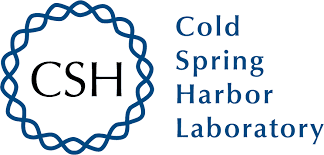Cold Spring Harbor Laboratory

Cold Spring Harbor Laboratory (CSHL) has been awarded a research subcontract by Leidos Biomedical Research to lead a Cancer Model Development Center (CMDC) for pancreatic, breast, colorectal, lung, liver and other upper-gastrointestinal cancers.
The project is 100% supported by U.S. federal funds (NCI Contract No. HHSN261201500003I, Task Order Number HHSN26100008).
CSHL Cancer Center Director Dr. David Tuveson and CSHL Research Director Dr. David Spector will lead the multinational collaborative effort with Dr. Hans Clevers of the Hubrecht Institute, Dr. Aldo Scarpa and Dr. Vincenzo Corbo of the ARC-Net Centre for Applied Research on Cancer at the University of Verona, Italy, and Dr. James Crawford of Northwell Health and Dr. Peter Gregersen of Northwell’s Feinstein Institute for Medical Research.
Under the contract, the CSHL-led CMDC will establish up to 150 organoid models in one and a half years, contributing to a larger international effort to generate 1,000 new cancer models. The Human Cancer Model Initiative (HCMI) was announced in July 2016 by the National Cancer Institute, Wellcome Trust Sanger Institute in the United Kingdom (UK), Cancer Research UK, and the foundation Hubrecht Organoid Technology. As part of NCI’s Precision Medicine Initiative in Oncology, this new project is timed to take advantage of the latest cell culture and genomic sequencing techniques to create models that are representative of patient tumors and annotated with genomic and clinical information. This effort is a first step toward learning how to use these tools to design individualized treatments.
Dr. Tuveson, the project’s principal investigator, led an effort to develop pancreas cancer organoids, establishing CSHL as an instructional site offering courses in organoid development to the professional scientific community worldwide. Organoids can be established from healthy human tissue as well as from a variety of tumor tissue types. The power of the organoid is that it faithfully recapitulates the tissue from which it is derived. It can be genetically manipulated using technologies like shRNA (short-hairpin RNA) that can turn genes on and off, or the revolutionary gene-editing tool CRISPR-Cas9. Moreover, organoid models are amenable to drug screening approaches so they can be used to validate therapeutics.